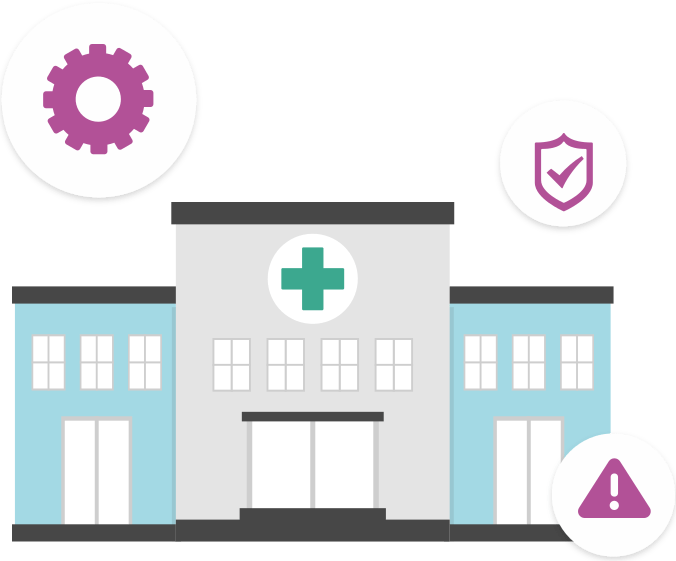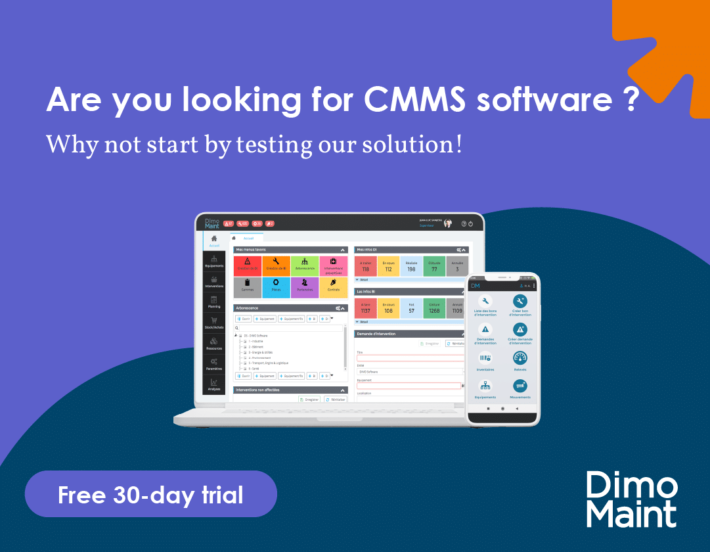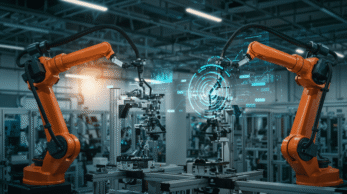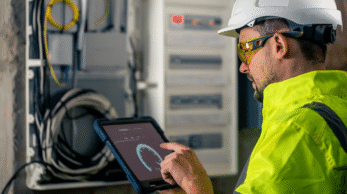Hospital sector maintenance is of particular importance: the safety, and even the lives, of patients may depend on its proper implementation. To rigorously manage the variety of medical devices in operation, healthcare facilities often need to optimize their industrial maintenance processes. This decision is inseparable from the adoption of a maintenance software, a source of reliability and precision for professionals in the sector.
The Challenges of Maintenance in the Hospital Sector
The medical sector in general, and hospitals in particular, are subject to particularly strict maintenance requirements. Errors, which may be tolerable in other industries, have no place in healthcare facilities. Industrial maintenance must therefore be carried out as proactively as possible, taking into account the following imperatives:
Strict and Evolving Regulations
Healthcare facilities operate within a rigorous regulatory framework. Professionals in the sector must demonstrate complete traceability of their maintenance. This transparency requirement calls for a management system capable of centralizing and organizing all maintenance information.
Critical Equipment Availability
In a hospital, the unavailability of an asset can lead to the postponement of medical procedures and potentially endanger patients’ lives. Maintenance is therefore an absolute priority, ensuring the optimal and continuous operation of medical devices. The goal: to minimize downtime and failures of sometimes aging assets.
Controlled Costs Despite Equipment Complexity
Faced with increasing budget constraints, healthcare facilities must both optimize their resources and maintain a consistent level of quality. Proper maintenance management is an important lever for controlling costs and extending the lifespan of medical assets, whose renewal is economically burdensome.
Maintaining a Level of Excellence and Reputation
Finally, the reputation of healthcare facilities, directly linked to the quality of care, will be a particular point of attention. To meet the need for excellence, professionals will need to respond with management tools that leave no room for ambiguity, allowing them to maintain the level of excellence expected by patients.
Complex Equipment and Patients at the Core of the Need
Among the main challenges of the hospital sector are the diversity and complexity of the technical assets to be maintained. These can be as varied as:
- Critical medical devices (ventilators, defibrillators, vital signs monitors)
- Medical imaging equipment (MRI, scanners, X-ray)
- Medical fluid distribution systems (oxygen, medical air)
- Building technical installations (air conditioning, electricity, plumbing)
- Sterilization and disinfection equipment
Between immediate and long-term costs and current regulations, equipment purchases are a challenge in themselves. Generally, the maintenance of these assets must be planned from the acquisition phase to quickly anticipate future needs.
Moreover, the quality of these assets directly impacts patient safety. Hospital maintenance must consider the risks associated with the medical environment and adapt its processes to:
- Prevent nosocomial infections
- Manage cross-contamination risks
- Control electromagnetic emissions
- Monitor air and water quality
To address every detail, the maintenance approach must be extremely rigorous and methodical: intervention planning will consider both precise availability slots and specific health requirements. A good choice of maintenance types and perfect coordination will therefore be necessary.
Preventive Maintenance to Meet Sector Needs
The hospital sector is obliged to look ahead for its maintenance. Planning operations in advance, according to a precise schedule, is the only feasible operating mode. Preventive maintenance is therefore a priority strategy, as it limits equipment unavailability as much as possible and extends the lifespan of often sensitive and costly assets.
Several complementary approaches are generally combined to ensure reactive maintenance:
- Systematic Preventive Maintenance : Based on predefined time intervals or usage counters, it is essential to replace components before they fail.
- Predictive Maintenance: Using sensors and data analysis to detect early signs of malfunction, this maintenance optimizes interventions based on the actual condition of the assets.
- Corrective Maintenance: Although the goal is to minimize it, it remains necessary to respond to unexpected failures with the greatest possible reactivity.
CMMS, for Unfailing Support of Medical Maintenance
Adopting a maintenance software, or CMMS, is the preferred solution for healthcare facilities to reconcile all aspects of maintenance and better understand the complexity of their assets, across all services. The major advantage of maintenance software: its ability to support the most demanding maintenance plans. Thanks to its centralization of maintenance data and process optimization, CMMS brings reliability to complex environments.
The maintenance software is equipped with essential features for the comprehensive management of a healthcare facility, including:
Comprehensive Asset Management
At the heart of the maintenance software is an exhaustive database of all medical devices with their technical characteristics, location, and intervention history. This global vision facilitates the monitoring and planning of preventive maintenance.
Intervention Planning and Automation
The CMMS software automatically generates work orders according to defined preventive maintenance protocols. It also allows for assigning tasks to the most qualified technicians and tracking their completion in real-time.
The Vichy Hospital Center can testify:
Thanks to DimoMaint, more than 11,700 corrective and preventive maintenance work orders are processed annually, involving more than 1,125 intervention units in the database. This database will soon be expanded to include 1,000 medical beds and chairs.
Documentation and Traceability
Thanks to CMMS, each intervention is documented in detail and includes photos, reports, and measurements. This traceability is essential for full traceability of operations and for compliance with the regulatory requirements of the hospital sector.
Stock and Spare Parts Management
The maintenance software is synonymous with better spare parts management. The automatic triggering of orders when stocks reach a critical threshold ensures a constant availability of components, and thus continuous operation of the assets.
Advanced Analysis and Reporting
Finally, CMMS provides healthcare professionals with statistical analysis and reporting tools to better assess their maintenance performance. Problematic assets will be identified, and more informed decisions will be made regarding hospital assets.
Key benefits of adopting a CMMS in a hospital setting include:
- Quality of care: CMMS directly contributes to the safety of care. Systematic preventive maintenance limits technical incidents during critical maintenance interventions and contributes to smoother care pathways.
- Daily resource management: In the short and long term, maintenance software allows for better allocation of human and material resources. With CMMS, unnecessary travel is limited, and interventions are grouped by area or type of asset.
- Flawless compliance and operation: As a source of maintenance traceability, CMMS also ensures better future preparedness. The software simplifies audit preparation and demonstrates compliance with current standards. Facilities that use it report greater visibility into their internal operations and approach patient care with greater peace of mind.
The advantages of CMMS are numerous, as evidenced by the technical teams at CH Valenciennes:
Another major advantage of DimoMaint’s CMMS is its API connectors that allow software and AI to communicate and exchange information. For example, the APAVE control office can directly transmit all its requests from its software when conducting regulatory inspections on buildings and assets at CH Valenciennes, and DimoMaint’s CMMS converts them into work orders.






